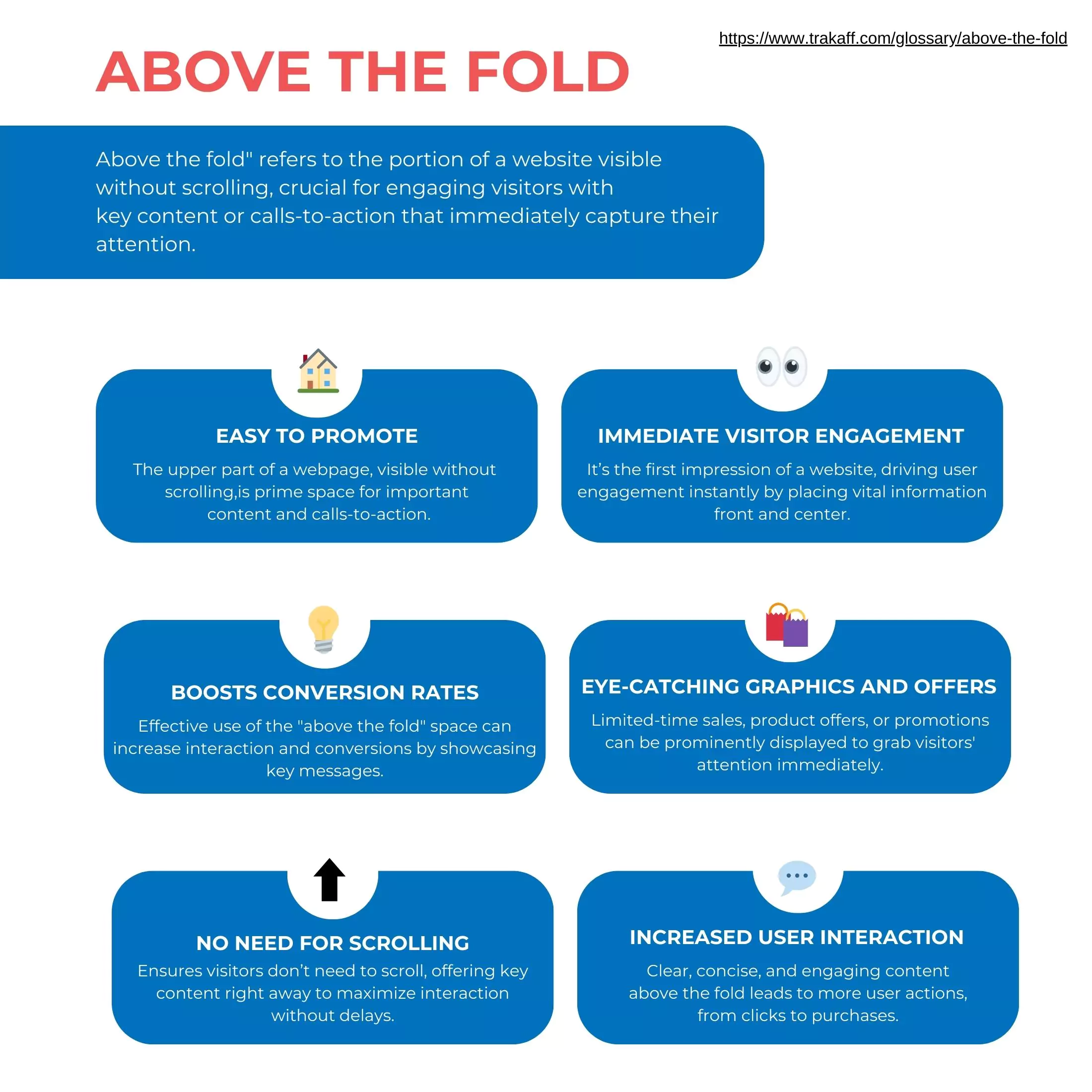Glossary > Above The Fold
Above The Fold
What is Above the Fold?
A website’s “above the fold” refers to that part visible without scrolling that’s crucial in engaging visitors by offering key content or calls-to-action that immediately draw their eye
And similar to what newspapers do with bold headlines on top half pages.
An e-commerce website might use its display banners with coupons attached as ways of quickly drawing their interest—something similar might work when used for marketing campaigns.
And products display on the top half pages of their pages.
This space serves as prime real estate for crucial messages, such as travel websites displaying banner ads for special offers or features to engage visitors instantly, so making sure this area of a web page has a good design can significantly increase interaction and conversion rates.

Why Is Content Above the Fold Important?
Your first impression matters with any website; using this space effectively can drive immediate user engagement.
For instance, promoting limited-time sales could use eye-catching graphics with a “Buy Now” button to encourage action from visitors right away.
Example: An online bookstore that uses “above the fold” advertising to highlight a limited-time discount makes a powerful statement about customer engagement without the need to scroll.
By placing important information directly in front of visitors’ faces without needing to scroll.
This strategy ensures maximum user interaction and engagement without delay.
Video Summary-
This video explores the idea of “above the fold” and its importance in web design and offers practical advice for enhancing this crucial section to increase user engagement and conversions.
Frequently Asked Questions
How Does “Above The Fold” Affect Engagement?
It is more likely to be seen and interacted with, making it essential for engagement and conversions.
Can content above the fold be optimized for SEO?
Yes; strategically placing keywords or calls-to-action it can enhance SEO as well as user experience.
Related Articles